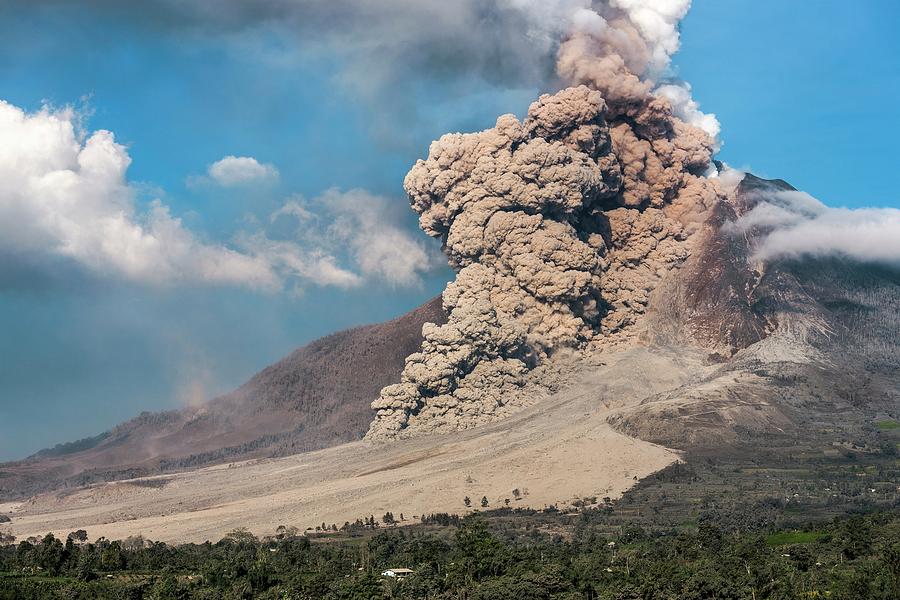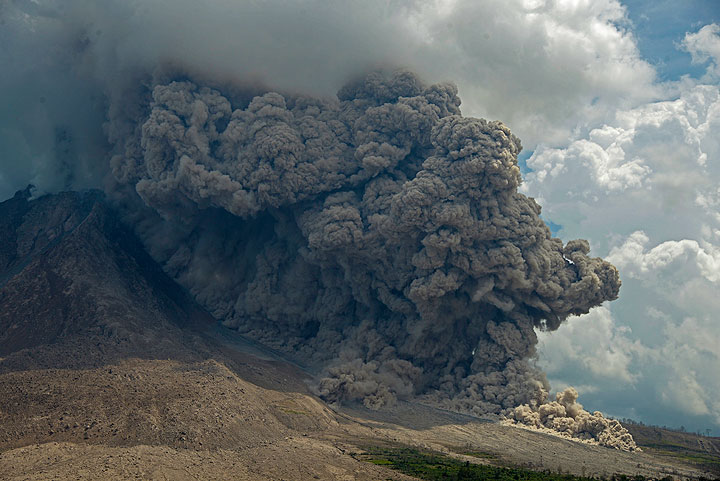
Also, the danger from pyroclastic flows is so great that they have seldom been observed during their formation. Varieties of pyroclastic flows have been named by volcanologists using several different languages, resulting in a multiplicity of terms. The nomenclature of pyroclastic flows is complex for two main reasons. Variously called nuées ardentes (“glowing. Pyroclastic flows are the most dangerous and destructive aspect of explosive volcanism. The expansion of these gases accounts for the nearly frictionless character of the flow as well as its great mobility and destructive power. Both the incandescent pyroclastic particles and the rolling clouds of dust that rise above them actively liberate more gas. The fluid nature of a pyroclastic flow is maintained by the turbulence of its internal gases. (The term pyroclastic derives from the Greek pyro, meaning “fire,” and clastic, meaning “broken.”) Pyroclastic materials are classified according to their size, measured in millimetres: dust (less than 0.6 mm ), ash (fragments between 0.6 and 2 mm ), cinders (fragments between 2 and 64 mm, also known as lapilli), blocks (angular fragments greater than 64 mm), and bombs (rounded fragments greater than 64 mm). Pyroclastic flows have their origin in explosive volcanic eruptions, when a violent expansion of gas shreds escaping magma into small particles, creating what are known as pyroclastic fragments. Perhaps the most famous flow of this type occurred in 1902 on the French Caribbean island of Martinique, when a huge nuée ardente (“glowing cloud”) swept down the slopes of Mount Pelée and incinerated the small port city of Saint-Pierre, killing all but two of its 29,000 residents. Reaching such temperatures and velocities, pyroclastic flows can be extremely dangerous. Flows may even travel some distance uphill when they have sufficient velocity, which they achieve either through the simple effects of gravity or from the force of a lateral blast out of the side of an exploding volcano. The velocity of a flow often exceeds 100 km (60 miles) per hour and may attain speeds as great as 160 km (100 miles) per hour. The temperature of the volcanic gases can reach about 600 to 700 ☌ (1,100 to 1,300 ☏). Pyroclastic flow, in a volcanic eruption, a fluidized mixture of hot rock fragments, hot gases, and entrapped air that moves at high speed in thick, gray-to-black, turbulent clouds that hug the ground.

#Pyroclastic flow how to#
COVID-19 Portal While this global health crisis continues to evolve, it can be useful to look to past pandemics to better understand how to respond today.Student Portal Britannica is the ultimate student resource for key school subjects like history, government, literature, and more.From tech to household and wellness products. Britannica Explains In these videos, Britannica explains a variety of topics and answers frequently asked questions.

This Time in History In these videos, find out what happened this month (or any month!) in history.#WTFact Videos In #WTFact Britannica shares some of the most bizarre facts we can find.Demystified Videos In Demystified, Britannica has all the answers to your burning questions.Britannica Classics Check out these retro videos from Encyclopedia Britannica’s archives.


 0 kommentar(er)
0 kommentar(er)
